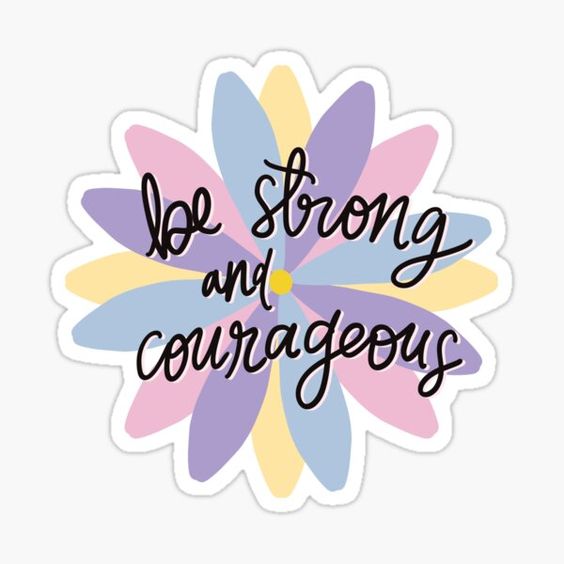|
So this is a story about wheat and bread and who you are and what is in your kit.
EINKORN is the name of an ancient wheat and means 'single grain'. Einkorn wheat is pure; it's not genetically modified and because it is highly nutritious, it keeps you very full. It also lacks the chromosomes that cause wheat intolerance. Bread way back then was almost a complete food. Jesus is our Einkorn wheat, he's pure, no mixed DNA, and He is all that we need. John 6:35 SAYS 'I am the bread of life; whoever comes to me shall not hunger, and whoever believes in me shall not thirst'. In John 6:51 it says, 'I am the living bread that came down from heaven. If anyone eats this bread, he will live forever. And the bread that I will give for the life of the world is my flesh'. We give out of the bread of life of who Jesus is in us. If He is in you and you are in Him and one with him, then that living bread is dwelling in you and waiting to be multiplied out. We don't need anything special to do that because it's already available IN HIM. Now Jesus isn't way out there in the sky somewhere either, He is both seated next to His Father in heavenly places, but He is also one spirit with us. What He can do, you can do. What He has, you also have. We are created in the Father's image, so who He is, is in a sense who you are! If we can grab a hold of that revelation that WE ARE ONE WITH HIM, HE IN US AND WE IN HIM everything changes about our identity. In Matthew 14:9-21 is the story of Jesus feeding the 5000. In verse 13 Jesus had just learnt from the disciples of John's beheading. It says Jesus was moved by compassion for the crowds THAT WERE IN FRONT OF HIM, he wasn't moved by His grief and walked away. Our emotions of course are quite valid, however in the days ahead we will see many in need, and we are to be moved by our spirit and not our flesh. Even when we have a bad day, it has nothing to do with our level of faith or how emotional we are feeling; we must learn to step into that place in the Spirit and operate from there. The disciples saw only empty stomachs, but Jesus saw lost souls and people in need. In verse 16 Jesus said to them 'you give them something to eat'. Interestingly, the disciples seemed to have forgotten all the miracles they had seen Jesus do previously, and were not understanding that they were just as capable of multiplying the loaves and fishes as Jesus was. This is why growing in our identity, intimacy and sonship with Jesus is so important. Understanding WHO HE IS IN YOU! Our resources and who we are, are sufficient for the '5000' Father will be sending us to or bringing to us. We each have our own unique bread recipe and type of fish in our kit that is perfect for our 5000. Jesus took what they collected and took it to Jesus to bless (and multiply) it. Because Jesus is in us, that capacity to bless and multiply is already in us. Jesus was trying to teach the disciples they had the same ability to produce life in others as He had. In Him, our only source, we have an endless supply for our 5000. It does not run out (verse 20). Your 5000 will look different to mine. This is why we cannot compare ourselves, our gifting/calling/purpose/assignment mix to anyone elses. Your recipe is unique. You have the perfect bread mix for your 5000. And Father will send them and lead you to them. Be sensitive daily to the nudges and hints of the Holy Spirit. Ask Him who, where, when, how for each day. Whether what you do is one on one, or with many, or is a ministry in the Spirit, it is all essential - this is the Body flowing together. When I ministered at the Kaipara Women's Conference in March of this year after this message, many of the women came for prayer to find out more about their 5000. Through word of knowledge Holy Spirit was telling me of their passions, giftings and what that currently looked like. Most of the women were already doing in some form or another what God had put in them, but those seeds are going to burst forth and multiply into more and bigger fruit. The biggest thing holding them back was lack of confidence in who they are and what they feel God has given them to do or was asking them to do. Father loves and rewards our hunger, humility, intimacy with Him and our obedience. That is what equips us for our 5000. We don't have to change who we are. We don't have to be a polished performer following protocols and formats and strategies of man to reach our 5000. We just have to be ourselves and in relationship with Him. Our 5000 will be attracted to who you uniquely are, not some man-made image we have been taught. JUST BE YOURSELF, that is who they enjoy being with. Let your light shine, love on people, you have the bread, water and new wine they need. You will meet many women at your well. If your gift is to give hospitality, listen and love, then just do that. If you love to lift people up our of despair and encourage them, then just do that. Whether you do it at home, in the supermarket, at work or in fellowship, they will be your 5000. You will soon learn to recognise them. You are my 5000 and the ones I minister encouragement and inner healing to on a one on one basis. I said at conference that my mercy gifting is not great, but I'm growing in that. I've learnt to understand my gifting/calling/purpose/assignment mix and to keep to that lane and not look at what others are doing. It doesn't matter what we consider a big or small thing we are doing, it still reverberates out to many. For a long time we have been in transition like incubating chicken eggs about to hatch. We've felt like overdue mamas, stretched and tired from the waiting. But our birthing time is now and YOU ARE MORE THAN READY and YOU'RE GONNA HAVE SOME BEAUTIFUL BABIES! Father says in 1 Peter 2:9, 'you are a chosen generation, a royal priesthood, a holy nation, His own special people, that you may proclaim the praises of Him who called you out of the darkness into His marvellous light'.
0 Comments
Family dynamics - they can be a joy or one of the most triggering and traumatising relationships in our lives. God's best for us is to enjoy wholesome, loving, restored relationship with our close and extended family. For some of us, relationships are so damaged beyond repair that for our own wellbeing and safety we cannot return to them but must focus on our own healing and restoration.
This article is prompted by a correction from the Lord with one of my family members. We have been working on our relationship for quite some time because we both want to enjoy each other when we're together. Part of this has required honesty from both of us, sharing the things that we have not understood and the things that have hurt us. A little while ago when I was doing nothing of importance, the Holy Spirit cut right across my thoughts and gave me an insight that led to me being able to genuinely apologise with no strings attached or expectations on my part. He said to me, 'you reacted the way you did because you were embarrassed, but you also took away that person's choices and placed yours upon them'. I am hoping that apology has bought some closure for them. How different their life might have been if I hadn't done that. The Lord in His mercy has still bought blessing out of it all. So the point of my sharing this is this. Restoration of family relationship can be hard work. It takes time, prayer, vulnerability, forgiveness and humility. It also takes a willingness to be shown the truth of a matter. It had never entered my head that I had taken their choice away from them. I was doing what I thought was right at the time. GOD GAVE ME HIS PERSPECTIVE that carried no blame or condemnation, just an opportunity to ask for forgiveness and facilitate healing for the other person. We have all seen those movies where family members haven't spoken to each other for years. Each declaring they are not going to be the one to reach out first. Unwilling to forgive, unwilling to accept they may have been in the wrong. It is time to reach out, to bring healing to our families. It doesn't start with them. It starts with US! I remember many years ago the Lord prompting me to write a letter to my parents asking their forgiveness for all the pain and worry I put them through when I was younger. I had many justifiable reasons why I needn't have done that. My parents really appreciated it but I didn't get the big reaction I was expecting. You see, it wasn't so much for their benefit, as it was for mine and for my own healing and growth. It needed to happen to remove a stumbling block in me. Perhaps there is a small note you can send, a quick text asking for a get together, or a phone call. The Lord will show you what to do. It's time to eat humble pie! Restoration begins with us, partnering with the Lord, seeking His insight and truth into our relationship breakdown, seeking our own healing in the first instance. Letting go, because ultimately people come first and maybe it wasn't such a big deal after all. God has been speaking to me a lot lately about courage and resilience. It's definitely something that we are all growing in at this time, and for many who have lost jobs and homes at this time, it has stretched them to the end of their courage and beyond.
Last week I had reason to think about the power and effects of covenants and agreements we make with others. The following is a reflection of some of my thoughts on this.
Covenants are powerful things and there are others who spiritually know a lot more than I do about them, but I wanted to increase your awareness of them. Many of us will be making big changes in our lives in the days ahead, some of us signing up for new businesses, properties, partnerships, friendships, commitments to organisations and community groups. We usually think of a covenant in a legal sense e.g. agree by lease, deed, or other legal contract. Then there is biblical covenant i.e. an agreement which brings about a relationship of commitment between God and his people. The Jewish faith is based on the biblical covenants made with Abraham, Moses, and David. There are also I believe, 'informal' covenants we can enter into out of naivety e.g. pricking our thumbs as childhood friends and swearing to never be parted, or swearing to a friend or family member that we will look after them forever. There can be ungodly covenants that our ancestors have entered into, both natural, spiritual or demonic that stay on our bloodlines and affect the fullness of all that we are meant to receive from the Father. Closing the door on Fear. What is fear anyway? Fear is an unpleasant emotion caused by the threat of danger, pain or harm.
Fear can cause us to FIGHT | FLIGHT | FREEZE God’s had His finger on this issue in my life lately. When I become aware of fear, I either run away or freeze up. I knew it is time to lean in to what Father is saying to me about fear. He wants me whole and well. By now, I’m well aware how much fear has robbed me of all kinds of possibilities, but I wanted to know why I have this problem with fear. This has been a known enemy to me for as long as I can remember. Fear comes in when there are doors of destruction open inside of us. For me it’s mostly jammed open because of trauma. When we started going deeper and investigating the causes, I can honestly say, I didn’t like it. It is only because I knew God wants to heal me completely from those traumas, that I’m persevering and surrendering. I trust Father more and more as I see evidence of His good nature towards me. I would like to share with you what I’ve learnt so far in how to deal with these open doors. I hope that this will encourage you to seek Father if you are struggling with fear. IDENTIFY THE DOOR AND CALL OUT THE FEAR COMING FROM IT There are doors in my life that I’ve chosen to forget. It’s too painful and I’d rather have them buried deep so they are out of sight out of mind. But the thing is, the longer it sits there, the more it festers and influences many areas in my life. I know that God has me covered. I trust Father has a good reason for taking me to those doors. So it’s okay to identify and call out those fears. CONFRONT THE FEAR WITH THE WORD OF GOD The Word of God is a double edged sword so by decreeing God’s word, I cut away the lies. 2 Tim 1:7 says that God has not given me a spirit of fear, but of power, love and a sound mind. What this looks like to me is that I can confront that fear coming from that door and renounce it. Fear is not part of my identity! But power, love and a sound mind is! So, I then choose to love more and focus on what is good and positive. 1 John 4:18 says that God’s perfect love drives out fear. I’ve noticed when I feel fear rise up in me it is because I lack a manifestation of love around me. It’s not always possible to get love from everyone. We are all human, but God is Love. I choose to sit in His love. I often ask Father to give me tangible love. I need to feel it not just know it. Like today, I was completely overwhelmed by His loving touch. It was like His presence hugged me. I cried hard, not because I was sad, but because it was overwhelmingly beautiful! Only He can move me like this. Because of my experiences with Father, I know that He is always with me and that He will never leave me. (Heb 13:5-6). When my love tank is full, I notice fear isn’t ruling my emotions. FORGIVE, RELEASE, BLESS. REPEAT I’ve asked Father how do I forgive when I still feel the pain and trauma. See, it’s easy to forgive when pain and trauma isn’t attached to it. Jesus said to bless those who curse you, pray for those who mistreat you (Luke 6:28). I wanted to rebel against this. It’s a crazy idea! I got angry, because I had other ideas about dealing with these people that hurt me. But then I had a change of heart. Maybe, I should try it Jesus’ way. Whenever Holy Spirit brings someone up, I would forgive them, ask Father to bless them more than me and then I would release them. Sometimes I have to repeat this process more for some than others until my heart truly aligns and brings me to a place where I really mean it and feel that release myself. In some cases, I would kick against this process because all kinds of uncomfortable emotions rise up like anger. I don’t feel soft towards that person at all. That’s when it becomes a choice – I have to forgive. I have to remember the bigger picture. The thing is. If I don’t forgive, that trauma can’t be healed properly, and therefore that door stays wide open for fear to have free access to me. Over the last few years, I’ve been going through this process a few times. It was the hardest to forgive myself. I’m still in that process. I didn’t realise that I held a grudge towards myself, until I become aware that I beat myself up quick and harshly and constantly. I realized the intensity of this when a friend told me to look at myself in the mirror and say to myself, Venessa, I love you. I told my friend that it’s a crazy idea! I actually got mad, and then I had so many questions, like why am I getting upset about this? My reaction is crazier! Then the penny dropped. Oh Lord, help me to forgive myself. FORM A HABIT OF COURAGE Lastly. Fear is a habit, but so is courage! I choose courage. Overcoming fear and staying above it, has not been easy for me. I’d rather run away, but I know it won’t help, so I choose to be brave and let Holy Spirit lead me to every door that needs to be closed. By now, I’m quicker to go through this process and not allowing a door to stay jammed open. Keeping the doors to fear shut, is a practice that continues. It becomes easier and quicker with practice. Perseverance is paying off. I’ve become more whole and stronger. I’m becoming who I am supposed to be. ............................................................................................................................................................................................... Venessa Smart is a very special friend, a creative and a prophet, who has given me endless encouragement and friendship over the last several years, and it is an honor to post this testimony of a part of the journey she has been on. It is her hope that this article blesses someone else. |
AuthorsFiona Dieleman Archives
March 2023
Categories
All
|
Photo from abbilder





 RSS Feed
RSS Feed
